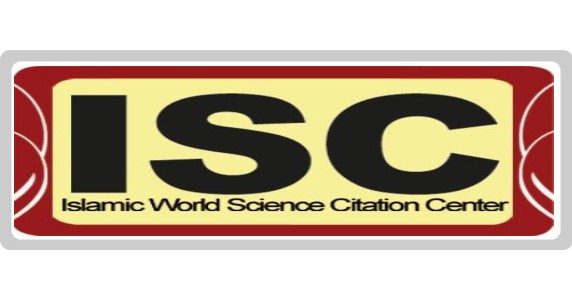Designing a “Peace Education” Curriculum for Lower Secondary Education
Keywords:
Peace education, course design, junior high schoolAbstract
The aim of the present study is to design a “Peace Education” curriculum for the lower secondary education level. This study adopts a qualitative approach in terms of data type and utilizes the research synthesis method. Scientifically validated studies on peace education published between 2004 and 2023 in national and international academic databases were analyzed. Initially, using keywords such as “peace,” “curriculum design,” and “peace education,” and applying inclusion criteria, 120 scientific studies were identified. Subsequently, based on exclusion criteria, 54 studies were selected for final analysis. The research data were collected through qualitative analysis of the reviewed documents. For qualitative data analysis, the six-step research synthesis model of Sandelowski and Barroso was employed, using the Attride-Stirling (2001) method based on a thematic network framework consisting of basic, organizing, and global themes. Based on the identified codes, after removing redundant themes and merging repetitive ones, 294 basic themes, 92 organizing themes, and 10 global themes were identified. These global themes include educational content, student roles, context, course objectives, cultural and socio-artistic school activities, teaching methods, evaluation, support from curriculum planners and education policymakers, parental awareness, and the training of peace-oriented teachers. Accurate understanding of the dimensions and components of peace education is a prerequisite for the success of such curricula at the lower secondary education level.
Downloads
References
Anggraeni, L., Affandi, I., Wahyudin, D., & Azis, A. (2023). The Board Game Peace Education Model as an Educational Media Towards 2024 Election for the Young Generation. https://doi.org/10.2991/978-2-494069-35-0_119
Balasooriya, A. S., Baldo, M., & Fumiss, E. (2001). Learning the way of peace: A teachers' guide to peace education Integrating life skills into the primary curriculum. New York, UNICEF. https://doi.org/10.1080/14767724.2015.1127749
Brantmeier, E. J. (2023). Transformative Aspirations for Peace Education Research. Journal of Peace Education, 20(1), 1-7. https://doi.org/10.1080/17400201.2019.1669145 10.1080/17400201.2023.2189668 10.1080/17400201.2024.2320516
Entezami, M., & Pourali, P. (2021). Explaining the Necessity of the Role of Peace Education in Curriculum Planning. https://civilica.com/doc/1594314
Gross, Z. (2017). Revisiting peace education: Bridging theory and practice-International and comparative perspectives-Introduction. Research in Comparative and International Education, 12(1), 3-8. https://doi.org/10.1177/1745499917698290
Gumut, V. (2006). Peace education and peer mediation. Spectrum Books Limited.
Harris, I. M., & Morrison, M. L. (2012). Peace education. McFarland.
Hosseini, G. E. (2018). An Overview of Peace Education in Afghanistan.
Kazempour, E. B. M., Ghaffari, K., & Asaei, S. M. (2019). The Role of Peace Education in Responsibility and Self-Control Skills of Students. Leadership and Educational Management, 49, 247-266.
Kilag, O. K. T., Mambaje, O. C., Rabi, A. A., Uy, J. C., Miñoza, E. G., & Padilla, J. B. G. (2023). The Practice of Peace Education: Applied Research on Peace Education in the Twenty-First Century. European Journal of Higher Education and Academic Advancement, 1(2), 82-91. https://doi.org/10.61796/ejheaa.v1i2.104
McInerney, W. W., & Archer, D. T. (2023). Men’s Violence Prevention and Peace Education: Drawing on Galtung to Explore the Plurality of Violence (s), Peace (s), and Masculinities. Men and Masculinities. https://doi.org/10.1177/1097184X221149989
Miller, L. (2023). A Peace Education Model for Aligning the Aim of Ingenious People for Self-Determination with the Socio-Political Aims of Government: Bangladesh Context. The Oriental Anthropologist. https://doi.org/10.1177/0972558X231158794
Mishra, L. (2015). Implementing Peace Education In Secondary Schools Of Odisha: Perception Of Stake holders. Sakarya University Journal of Education, 5(2), 47-54.
Mishra, L., Gupta, T., & Shree, A. (2020). Guiding Principles and Practices of Peace Education Followed in Secondary Schools of Mizoram. International Journal of Evaluation and Research in Education, 9(4), 1096-1101. https://doi.org/10.11591/ijere.v9i4.20738
Navarro-Castro, L., & Nario-Galace, J. (2010). A pathway to a culture of peace.
Osawa, K. (2023). EXAMINATION OF PEACE VALUES IN JAPANESE EFL TEXTBOOKS FOR PEACE EDUCATIONLA - English.
Rostami, A. M., Abolmaali, K., Dortaj, F., & Ahadi, H. (2021). The Effectiveness of Peace Education on the Psychological Capital of Male Middle School Students. Sociology of Education, 342-352.
Rostami, A. M., Abolmaali, K., Dortaj, F., & Ahadi, H. (2022). The Effectiveness of Peace Education on Increasing Self-Efficacy and Resilience in Students. Psychological Sciences, 113, 956-969. https://doi.org/10.52547/JPS.21.113.953
Sabzikarian, Z., & Atohri, Z. a.-S. (2003). A Comparative Analysis of Peace Education Components in Social Studies Textbooks Before and After the Transformation Document. New Educational Ideas, 19(3), 205-235.
Schmidt, S. (2023). A Post-Colonial Analysis of Peace Education in Rwanda
Setiadi, R., Kartadinata, S., Ilfiandra, S., & Nakaya, A. (2017). A Peace Pedagogy Model for the Development of Peace Culture in An Education Setting. The Open Psychology Journal. https://doi.org/10.2174/1874350101710010182
Shabani, M., Taheri, A., & Isaee Khosh, K. (2016). Peace Education: A Path Toward Developing a Culture of Peace.
Tanabe, J. (2014). Buddhism and non-violent world: Examining a Buddhist contribution to promoting the principle of non-violence and a culture of peace. Factis Pax: Journal of Peace Education and Social Justice, 8(2), 122-149.
Tighbakhsh, S., & Saadatmand, Z. (2017). Peace Education Curriculum in Elementary School. Qualitative Research in Curriculum Planning, 7, 66-89.
Valikhani, K., Sajadi, S. M., Keshavarz, S., & Salehi, A. (2022). Analysis of Peace Education Components in the Discursive Documents of Education. Sociology of Social Institutions, 20, 62-80.
Wibowo, D. (2022). The role of school culture in teacher professional development for peace education: the case of Sukma Bangsa School Pidie in post-conflict Aceh, Indonesia. Journal of Peace Education, 19(2), 182-204. https://doi.org/10.1080/17400201.2021.2015573
Zamani Kukhali, L., Abolmaali, K., & Sepah Mansour, M. (2021). The Effectiveness of Peace Education on Academic Competence and Positive Orientation of Students Toward School. Research in Educational Systems, 53, 84-97.
Downloads
Published
Submitted
Revised
Accepted
Issue
Section
License
Copyright (c) 2025 Abas Noorabadi, Afsaneh Saber Garakani, Narges Keshti Aray, Sharareh Habibi (Author)

This work is licensed under a Creative Commons Attribution-NonCommercial 4.0 International License.










